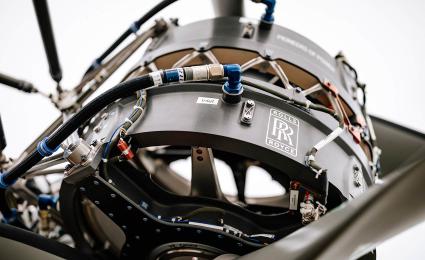Hydrogen engines and SAF represent two of the most forward-looking technologies in decarbonized aviation...


An aerospace supply chain fit for the future
By Manfred Hader and Stephan Baur
Why a "local for local" strategy can overcome today’s global challenges
"A shift towards a local for local supply chain will require aerospace players to rethink their capabilities."
The aerospace supply chain is wobbling. The Covid-19 pandemic has exacerbated the major operational pressures already on it, and two new trends are impeding aerospace companies in their efforts to keep up with post-Covid growth ambitions. These trends, namely growing geopolitical constraints (from trade wars to rising nationalism) and a push for more sustainability, pose obstacles to the continuation of the traditional "global for local" supply-chain model. In short, it is no longer robust enough. This increases the relevance of "local for local" supply chains centered on key markets for the aerospace industry – North America, Europe and potentially China. As such, we expect a transition towards the local for local model over the next 10-15 years, and recommend that OEMs and suppliers take action now to begin their own transformation.

"Local for local supply chains are driven by geopolitical constraints as well as sustainability and present key success factor for OEMs and suppliers in the future."
Two key developments justify a move towards local for local supply chains. First, they help meet the challenges of growing geopolitical and sustainability constraints. Second, new technologies, particularly in automation, as well as needed investment into new aircraft programs (e.g., next generation single aisle, sustainable aircraft programs ) are making them economically viable.
In this article, we look in detail at both the challenges posed by the transformation to local for local supply chains, and the enablers that can support it. As well as the why, we also look at the how. To support OEMs and their suppliers initiate their transformation, Roland Berger has developed a step-by-step approach to succeed in this ambitious supply-chain reboot.
It consists of three steps, scheduled over a period of 10-15 years to tie in with the development of new aerospace programs:
- Set your local for local ambition level: What is your target model? What will its supporting value creation landscape look like? And how can you best leverage enablers? To answer these questions, we offer a local for local capabilities pyramid to help define a blueprint tailored to your value-chain positioning.
- Develop a tailored roadmap: We advise creating an ambitious yet realistic local for local supply-chain roadmap that addresses your target model, and explain why ‘first movers' will reap the greatest benefits, from subsidies to talent.
- Roll out and grow: Now’s the time to act, so we outline a two-phase plan. First, a medium-term ramp-up, involving the integration of existing modules into new local for local supply chains. And second, a longer-term operationalization phase to refine and scale local value-creating capabilities
Register now to receive regular insights into Aerospace & Defense topics.






